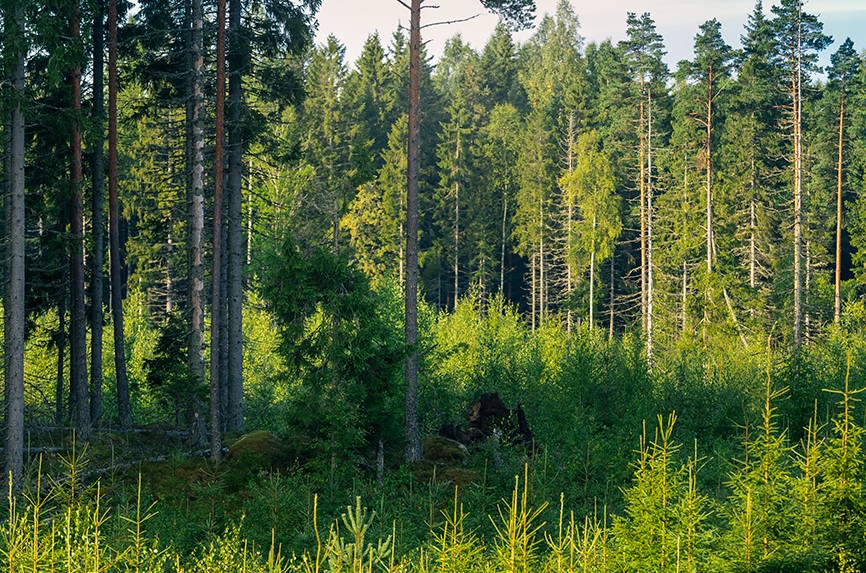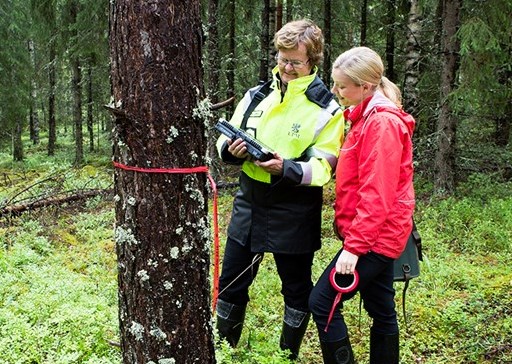- Detalles
- Categoría: El mundo
- Visto: 1330
 El expolio en los bosques amenaza a las setas, aliadas contra el CO2
El expolio en los bosques amenaza a las setas, aliadas contra el CO2
Los hongos fijan el dióxido de carbono al suelo, uno de los grandes almacenes del gas de efecto invernadero
Los hongos cumplen un papel fundamental en la conservación de la diversidad de los bosques y en su capacidad para mitigar los impactos del cambio climático. “No somos conscientes de que los bosques son como son por la simbiosis que existe entre los árboles y muchas de las setas que nos comemos: níscalos, boletos...
- Detalles
- Categoría: El mundo
- Visto: 1143
 Luz verde a la ‘Agenda Forestal de Navarra 2019-2023’
Luz verde a la ‘Agenda Forestal de Navarra 2019-2023’
El Gobierno de Navarra ha aprobado la Agenda Forestal de Navarra 2019-2023, un documento que actualiza la estrategia de la política forestal y sus instrumentos de planificación con "criterios de sostenibilidad, equilibrio y calidad medioambiental".
Así lo ha destacado la consejera de Desarrollo Rural y Medio Ambiente, Itziar Gómez, en la rueda de prensa posterior a la sesión del Ejecutivo, en la que ha resaltado que se trata de una "importante actualización por el volumen y por los nuevos criterios introducidos".
- Detalles
- Categoría: El mundo
- Visto: 1253
 Want to make forestry sustainable? Look to the Nordics
Want to make forestry sustainable? Look to the Nordics
Forests help the environment and provide bountiful resources. But they must be properly managed. The world could take a cue from the Nordic countries, where sustainable forestry is the norm.
Think of Finland, and you’ll probably imagine forests. It’s Europe’s most heavily forested country, with sixteen times more forest per capita than the European average. Woodland covers 23 million hectares, or about 75% of the land area.
- Detalles
- Categoría: El mundo
- Visto: 1222
 Las madera genera en España 25 millones de euros
Las madera genera en España 25 millones de euros
Las subastas de madera de montes públicos en España han tenido un valor de salida al mercado de 15 millones de euros en el tercer trimestre del año.
Esta cifra supone un descenso del 27% en cuanto al valor de la madera subastada respecto al trimestre anterior, según las cifras registradas por la plataforma nacional para el fomento de la madera, Maderea, que recoge todos los datos de subastas de madera de montes públicos a nivel nacional.
Tal y como informa la plataforma, se estima que el precio final de venta rondaría los 25 millones de euros, impuestos incluidos.
- Detalles
- Categoría: El mundo
- Visto: 1261
 Smart choices ensure sustainable and safe wood transport
Smart choices ensure sustainable and safe wood transport
UPM Forest achieves two goals in one with its logistical choices: lower emissions and improved transport efficiency are two sides of the same coin.
Logistics plays a significant role in the forest industry’s production chain. First the wood raw material is transported from the forest to the mill. Then, after processing, it is shipped to the customer as pulp, paper, plywood, or sawn timber.
UPM Forest reduces its carbon footprint and emissions by choosing the most appropriate vehicles, routes and warehouses for its transport needs. As a further positive offshoot, this also improves transport efficiency.
- Detalles
- Categoría: El mundo
- Visto: 1256
 Sustainable forestry shows how land use can help climate change
Sustainable forestry shows how land use can help climate change
Land and the climate interact with and influence each other. That means, to fight climate change, humans must change how they use the land. Sustainable forest management is one way forward.
Preventing the worst consequences of climate change (which, according to most scientists, requires limiting global temperature rise to less than 2°C) requires massive and sustained changes, across all sectors of industry and society. Dependence on fossil fuels must be reduced and new forms of transport explored.
- Detalles
- Categoría: El mundo
- Visto: 1244
 What makes Africa an emerging opportunity area for paper products?
What makes Africa an emerging opportunity area for paper products?
As incomes and living standards rise in many African countries, consumers with greater disposable incomes are purchasing more — and more varied — paper products. Consequently, the African continent is emerging as an exciting region for UPM’s pulp and timber businesses.
As the standard of living in Africa rises, so, too, does the continent’s demand for wood-based products. In particular, paper-based personal care products are becoming increasingly commonplace. Demand is expected to continue growing in coming years, thanks to urbanisation and higher disposable income.
